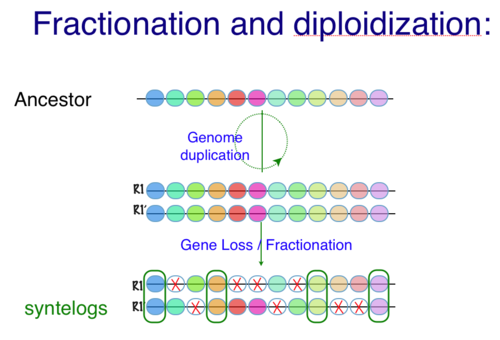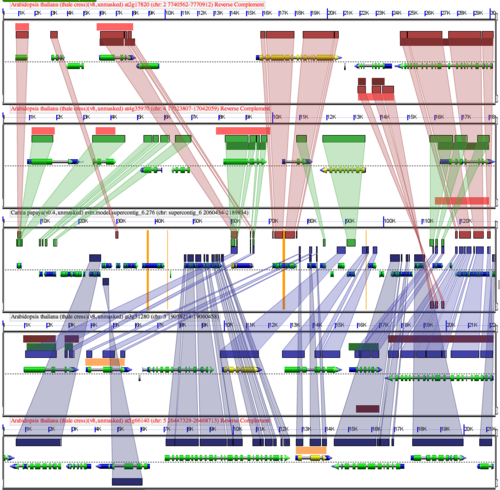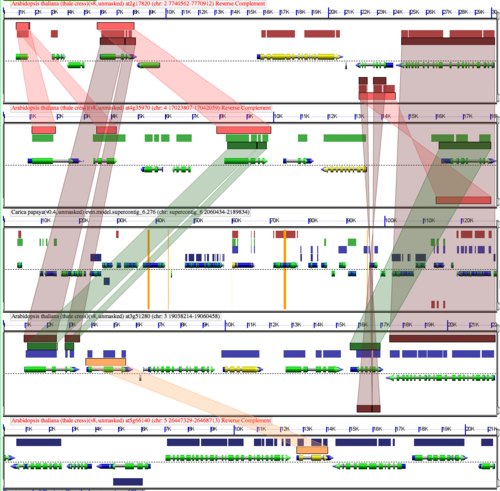Fractionation



Following whole genome duplication (WGD) events, fractionation is the process of gene loss from one homeologous genomic region or its partner region. Over evolutionary time, this returns a genome to its diploid state in terms of overall gene content. Thus, fractionation is part of the diploidization process. However, the overall structure of the genome will be vastly different as genes are lost from one homeologous region or the other resulting in genes having different neighboring genes. Also, some families of genes are retained preferentially following WGD events.
Fractionation is a natural process where genomic regions that contain genes, regulatory elements, or other genomic features are lost over evolutionary time. This process is especially prevalent in plant genomes with a history of polyploidy events. After the duplication of a genomic region, or the entire genome as is the case with tetraploidy, most of the duplicated genomic features are lost from one homeolog or the other. This is assumed to happen because there is no positive or purifying selection for the retention of these features in duplicate. (However, it is important to note that there are several classes of genomic features that are selected to be retained following genome duplication events. As example of such a class are transcription factor genes.)
When conserved noncoding sequences (CNSs) are fractionated, this is evidence that the cis-regulation of their retained nearby genes is being subfuncationalized. Since the regulatory function of CNSs is inferred, we do not know how they may be regulating gene function (e.g. enhancers, repressors). However, since they are usually clustered near a single gene in plants, we can assume that their presence is usually linked to that gene. As such, when a CNS is found by comparison to an outgroup genomic region (e.g. rice in our example), and not found in the neighboring gene’s homeolog, then the ancestral function of that CNS is retained in one homeolog and not in the other. When regulatory elements are fractionated, then the function of the gene has been subfunctionalized. For example, let’s say there are two cis-regulatory elements in a hypothetical ancestor gene, one responsible for regulating gene expression in leaves, and the other for regulating gene expression in roots. If this gene is duplicated and one duplicate loses the root regulatory element and the other looses the leave regulatory element, then the gene’s function has subfunctionalized.